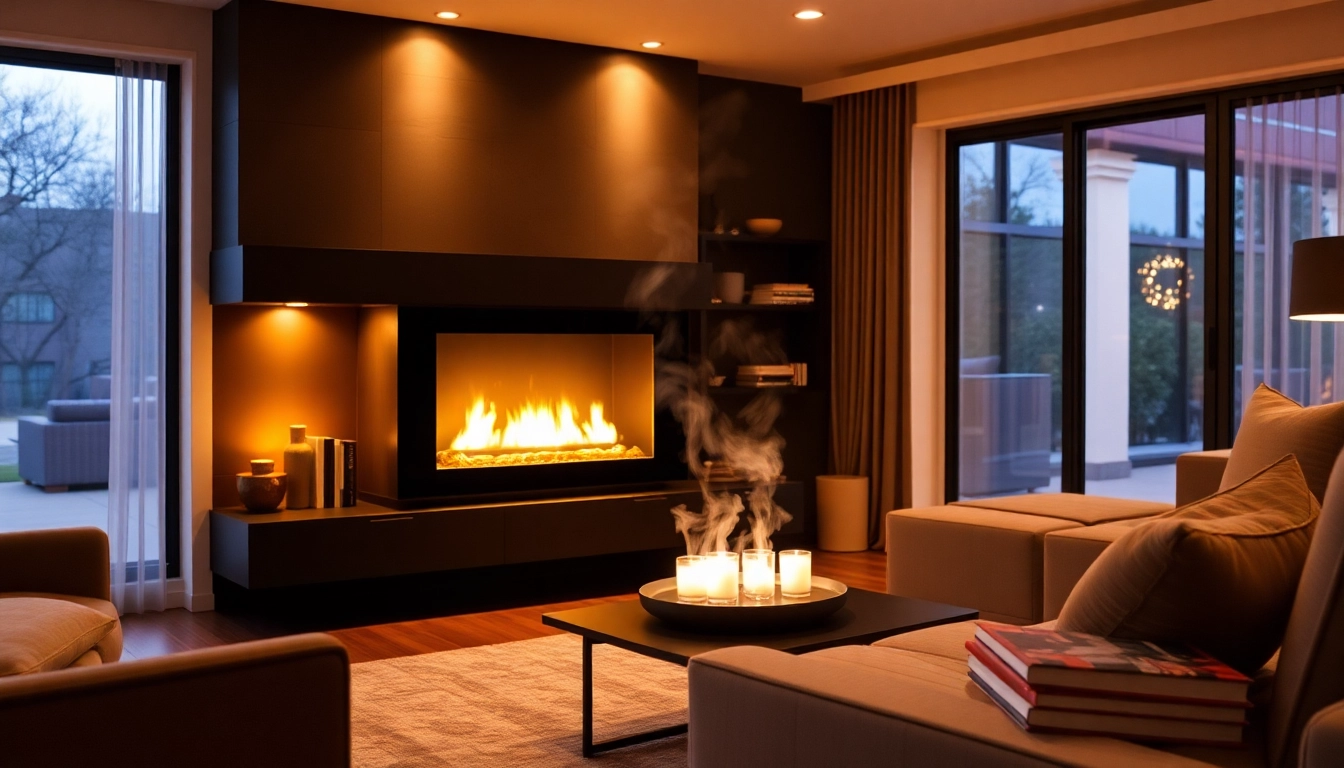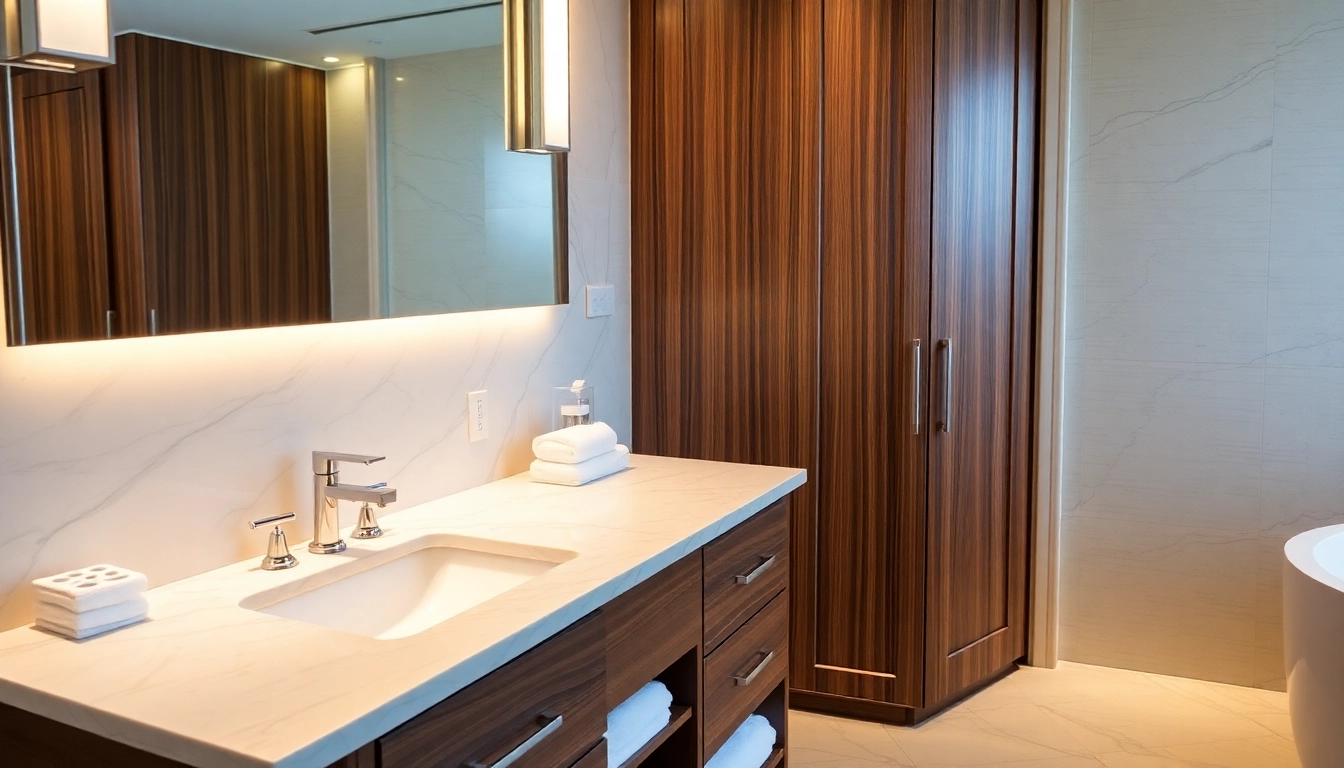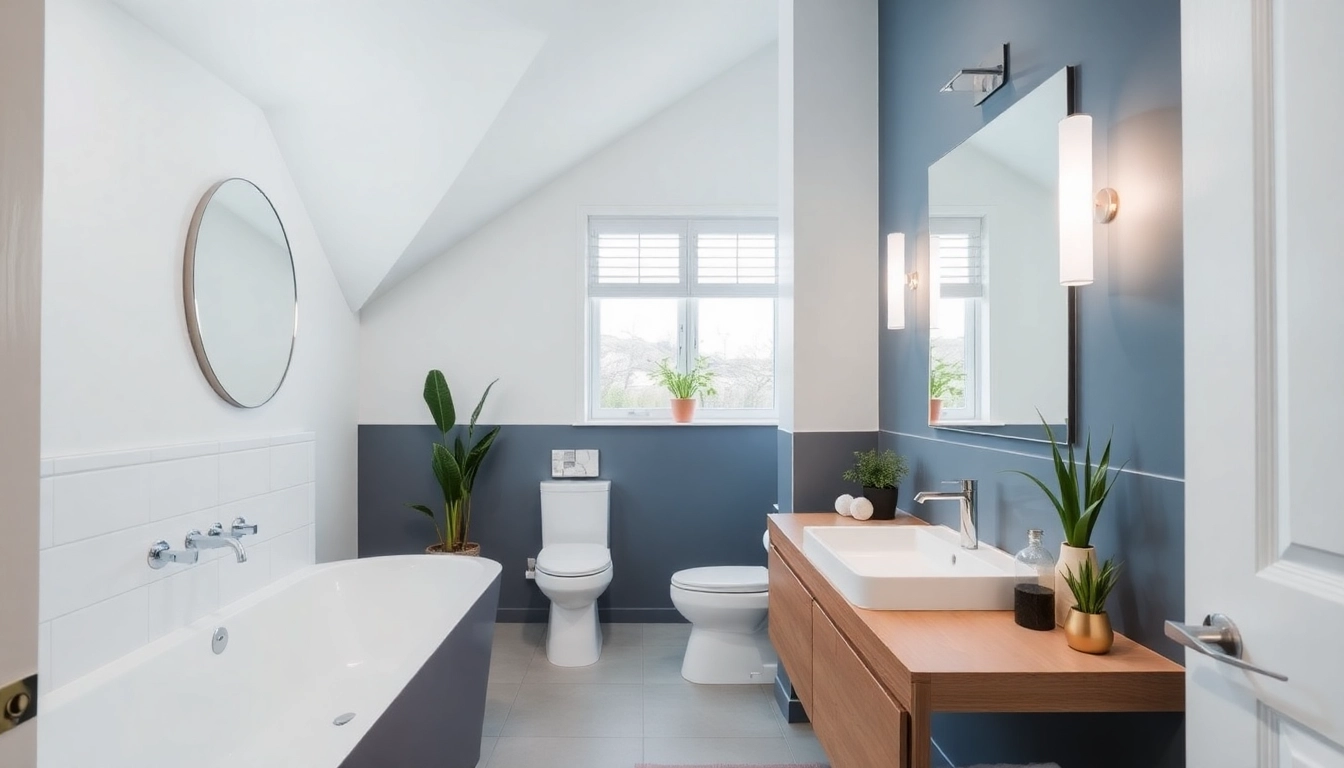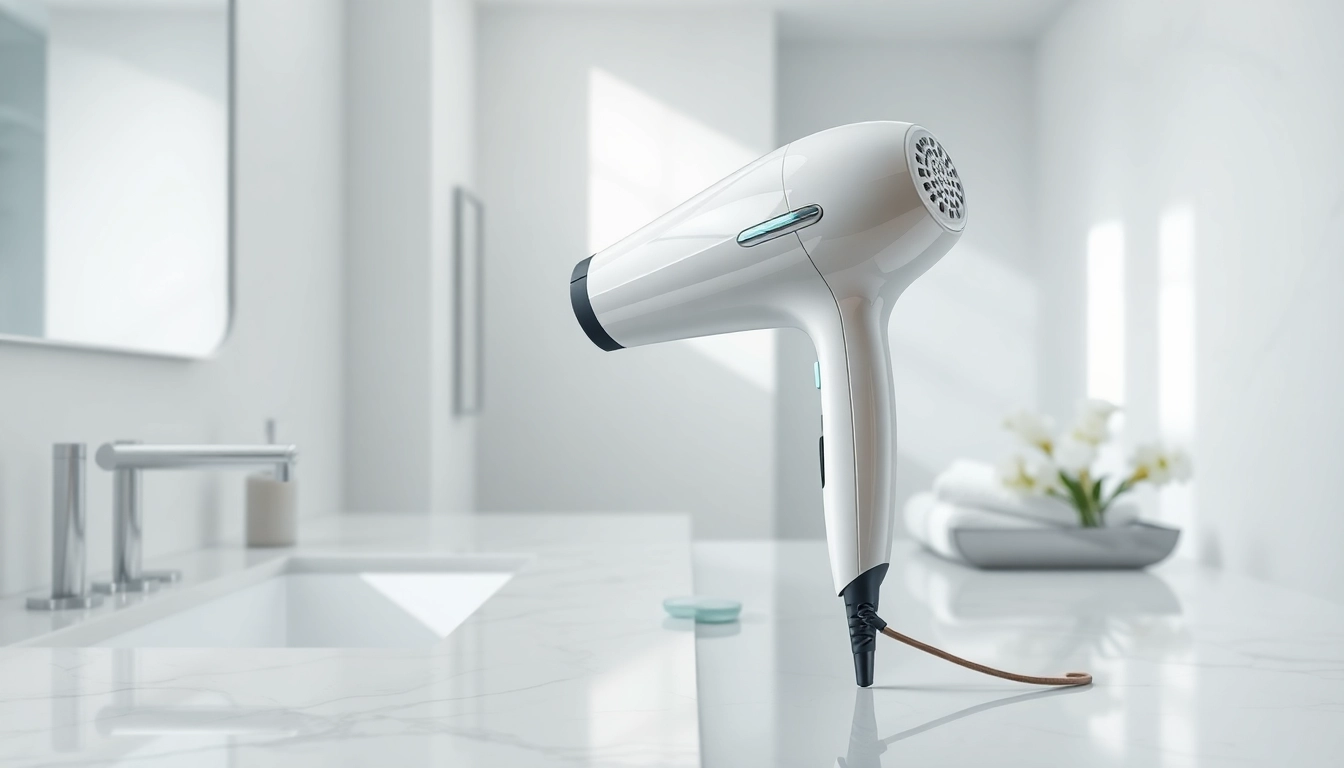Understanding Water Vapor Fireplaces
What is a Water Vapor Fireplace?
A water vapor fireplace is an innovative type of electric fireplace that generates the illusion of real flames by utilizing ultrasonic technology to create fine mist. Unlike traditional fireplaces, which often rely on wood, gas, or pellets for combustion, water vapor fireplaces operate more like humidifiers, effectively producing a stunning visual effect while remaining safe and environmentally friendly. This modern approach allows homeowners to enjoy the aesthetic appeal of a fireplace without the associated risks, such as fire hazards, smoke, or harmful emissions.
The flames produced by a water vapor fireplace are cool to the touch, rendering them safe for use in households with children and pets. The technology transforms water into vapor, which is then illuminated by LED lights to simulate realistic flames. For those seeking a stylish, ambient enhancement to their living spaces, a water vapor fireplace can be an ideal solution.
How Do They Work?
The operational mechanism of a water vapor fireplace primarily hinges on ultrasonic technology, which facilitates the conversion of water into fine mist. When the fireplace is switched on, an ultrasonic transducer vibrates at a high frequency. This vibration causes water to be dispersed into tiny droplets, forming a dense vapor that mimics flames. This vapor can be illuminated by LED lights, which provide an enchanting flickering effect reminiscent of real fire.
The use of LED technology not only enhances the visual output but also contributes to energy efficiency. By providing both visual appeal and safety, water vapor fireplaces represent a modern evolution in decorative heating solutions.
The Benefits of Using Water Vapor Fireplaces
- Safety: Water vapor fireplaces are inherently safer than traditional fireplaces as they do not produce actual flames and generate only a cool mist. This feature makes them safe for use around kids and pets.
- Environmental Friendly: These fireplaces do not emit harmful pollutants or contribute to outdoor air pollution, making them an eco-conscious heating alternative.
- No Need for Ventilation: Since they do not generate combustion gases, water vapor fireplaces can be installed without the need for venting, allowing for versatile placement within a home.
- Lower Maintenance: Maintenance is generally straightforward. The primary focus is keeping the water reservoir clean without the ash and soot that traditional fireplaces require.
- Visual Appeal: The realistic flames can create a tranquil ambiance, making them perfect for both relaxation and social gatherings.
Choosing the Right Water Vapor Fireplace
Factors to Consider Before Buying
When selecting a water vapor fireplace, several factors should be considered to ensure that you choose the right model for your space:
- Size: Measure the area where you plan to place the fireplace to ensure that it fits well within the dimensions of the room while maintaining ample space for comfort.
- Design: Choose a design that complements your existing interior décor. Water vapor fireplaces come in various styles, from sleek modern finishes to traditional designs.
- Power Source: Ensure that a nearby electrical outlet is available, as these units require electricity to function.
- Water Reservoir Capacity: Models with larger tanks will require less frequent refilling, which can be a convenience factor to consider.
- Features: Some fireplaces include additional features such as remote controls, customizable flame effects, or integrated heaters.
Top Features to Look For
In your quest for the perfect water vapor fireplace, pay attention to the following features:
- Realistic Flame Simulation: Look for models that provide adjustable flame heights and colors for a customizable experience.
- Built-in Heater Option: Some models offer heating elements, allowing you to utilize the fireplace for warmth during colder months.
- Remote Control Functionality: A remote can offer convenience for adjusting settings without having to move from your seat.
- Programmable Timer: This feature lets you set the fireplace to turn on or off at designated times, adding to energy efficiency.
- Sound Effects: Some models provide crackling sounds to further replicate the experience of a traditional fireplace.
Comparing Different Models
When comparing various models of water vapor fireplaces, it is essential to evaluate not just the aesthetic and functional features but also the cost-to-benefit ratio:
- Price Range: Prices can vary significantly based on brand, size, and features. Establish a budget and compare models within that range.
- User Reviews and Ratings: Examine customer feedback for insights into operational efficiency and durability.
- Warranty and Support: A good warranty indicates a manufacturer’s confidence in their product. Additionally, check for customer support services.
Installation and Maintenance Tips
Step-by-Step Installation Guide
Installing a water vapor fireplace is often a straightforward process, particularly compared to traditional fireplaces. Here is a basic installation guide:
- Choose a Location: Select an appropriate location with access to an electrical outlet.
- Prepare the Area: Clear the space of any debris and ensure that the surface is completely dry.
- Assemble the Fireplace: Follow the manufacturer’s guidelines for assembling the fireplace unit, if necessary.
- Fill the Water Reservoir: Fill the reservoir with distilled water as per instructions—this is crucial for optimal operation.
- Power On: Plug the unit in and turn it on, adjusting settings based on your preferences.
Routine Maintenance Practices
Routine maintenance of a water vapor fireplace is relatively simple:
- Water Replacement: Regularly refill the water reservoir to ensure consistent operation.
- Cleaning the Reservoir: Clean the water reservoir every few weeks to prevent mineral buildup.
- Filter Changes: If your model includes a filter, refer to the manual for recommended replacement intervals.
Troubleshooting Common Issues
Understanding some common issues and their solutions can prolong the life of your water vapor fireplace:
- Flame is Flickering: Check the water level in the reservoir; low water can cause an intermittent flame effect.
- Unit Producing No Mist: Verify that the reservoir is filled and that the ultrasonic transducer is functioning properly.
- Unpleasant Odors: Ensure the water is clean, and the reservoir is free of algae or mold buildup.
Safety and Environmental Considerations
Is it Safe for Homes with Pets and Children?
Water vapor fireplaces are notably safer than traditional fireplaces, primarily because they do not produce real flames or heat. This feature minimizes the risk of burns and fire hazards, making them a suitable option for homes with pets and children. However, it is advisable to ensure that children are instructed not to disturb the water reservoir or the electrical components.
Energy Efficiency of Water Vapor Fireplaces
Water vapor fireplaces consume significantly less electricity than other heating solutions while providing stunning visual effects. The use of LED lights results in an efficient energy output, making these models
environmentally friendly. Even though they may not provide conventional heating, their low energy consumption helps minimize overall costs.
Impact on Indoor Air Quality
One of the standout features of water vapor fireplaces is their positive impact on indoor air quality. By utilizing water vapor rather than burning fuel, these fireplaces do not release harmful particles or gases into the air. They can even contribute positively by slightly increasing humidity levels, which can be beneficial in dry environments.
Customer Experiences and Testimonials
Real User Reviews and Insights
Customer feedback on water vapor fireplaces consistently highlights their aesthetic appeal and safety features. Many users enjoy the serene ambiance created by the visual effects and appreciate the absence of smoke or odors. For instance, several customers have expressed satisfaction with the ease of installation and maintenance, emphasizing how hassle-free it is compared to traditional options.
Comparative Pros and Cons
Users have noted both advantages and disadvantages based on personal experiences:
- Pros: Easy to install, safe for families, attractive visual effects, environmentally friendly.
- Cons: Limited heating capability, potential for humidity issues in enclosed spaces, reliance on electricity.
Long-Term User Recommendations
Long-term users advocate for regularly cleaning the water reservoir to maintain performance and prevent issues. They also recommend ensuring that there is a continuous water supply for optimal operation. Additionally, investing in models that offer customization options can enhance the experience and allow users to adapt the fireplace to suit various moods and settings.



